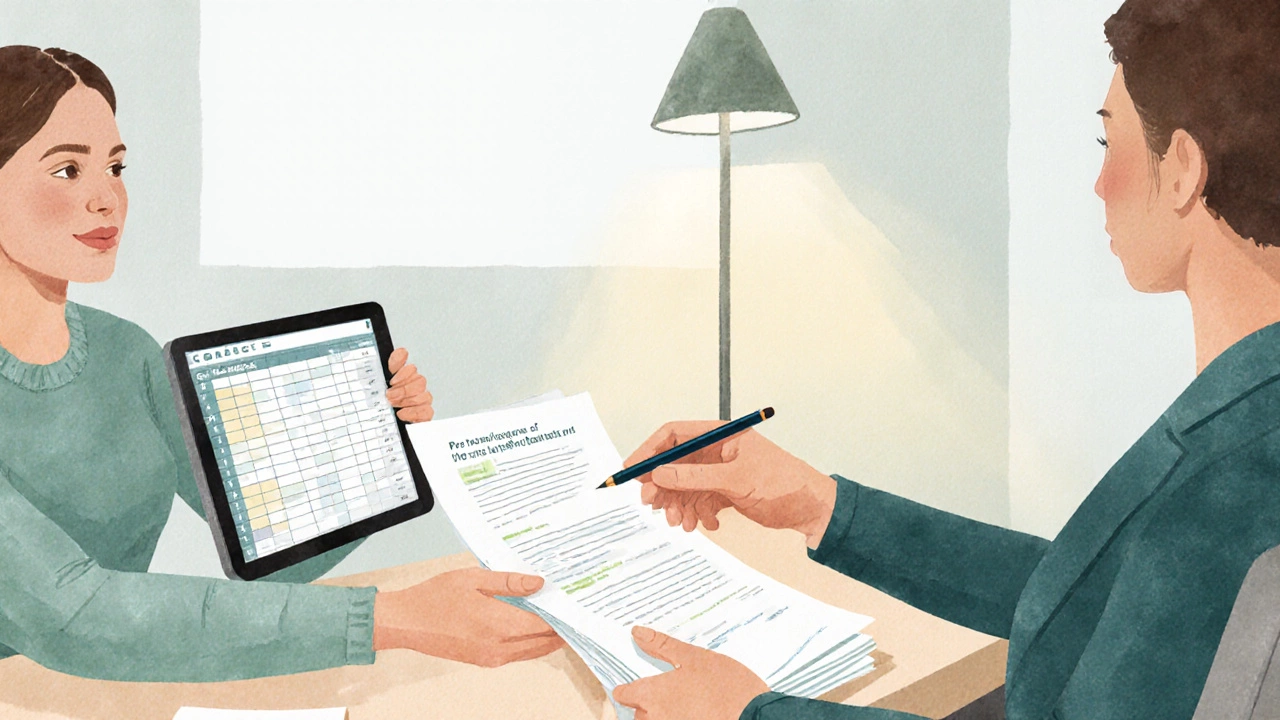
Polite Price Reduction Request Simulator
Try these example requests to get comfortable with different approaches:
- Neutral: "I'm really interested in this service and would like to explore if there's any flexibility on the price. Would it be possible to adjust the quote slightly?"
- Value-Based: "I've been impressed with the quality and would like to commit to a longer-term plan. Would we be able to discuss a reduced rate for a 12-month contract?"
- Collaborative: "I appreciate the service you offer and am eager to move forward. What options do we have to bring the cost closer to my budget?"
- Direct: "I've found a similar service at a lower price point. Is there any room to adjust the pricing to align with market rates?"
When the bill feels a little steep, asking for a lower price doesn’t have to feel awkward. Knowing the right words, timing, and mindset lets you stay courteous while still getting a better deal.
Key Takeaways
- Build rapport before you bring up money.
- Show clear value and explain why a lower price makes sense.
- Use neutral language and avoid demanding tones.
- Offer something in return, like a longer contract or quick payment.
- Know your walk‑away point and be ready to accept a firm answer.
Understanding the Goal: The price reduction request a courteous appeal to lower the amount quoted for a product or service
The aim isn’t to force a discount; it’s to open a conversation where both parties feel respected. When you frame the ask as a mutual benefit, the seller is more likely to see it as a win‑win rather than a challenge.
Step‑by‑Step Blueprint for a Polite Ask
- Do your homework. Research market rates, competitor pricing, and any promotions that might already be available.
- Build rapport. Mention something you appreciate about the product, service, or the salesperson. A genuine compliment creates a positive vibe.
- State your case with facts. Use numbers and examples to explain why the current price feels high.
- Offer something in return. Propose a longer commitment, bulk purchase, or faster payment to make the deal more attractive.
- Ask, don’t demand. Phrase the request as a question: “Would it be possible to adjust the price by a few percent?”
- Listen and adapt. Pay attention to the seller’s response and be ready to negotiate alternatives.
Language That Keeps the Conversation Friendly
Words matter. Instead of saying, “I need a discount,” try, “I’m really interested, and I was hoping we could explore a more flexible price.” Adding “I’m hoping” signals openness, while “explore” invites collaboration.
Other helpful phrases include:
- “Is there any flexibility on the price?”
- “What options do we have to bring the cost closer to my budget?”
- “If we were to commit to a longer term, could we discuss a reduced rate?”

When to Bring Up the Topic
Timing can make or break the ask. The best moments are:
- After you’ve shown strong interest. Once the seller knows you’re serious, they’re more inclined to accommodate.
- Before finalizing paperwork. It’s easier to adjust numbers before contracts are signed.
- When there’s a natural pause. Use a lull in the conversation to transition smoothly.
Over‑eagerly mentioning price at the very start can signal that cost is your only concern, which might weaken your negotiating position.
The Role of rapport a friendly, trust‑building relationship between buyer and seller
People are more likely to grant favors to those they like. A few minutes of small talk-about the weather, a shared hobby, or a recent positive experience with the brand-creates a bridge that makes the discount conversation feel less transactional.
Presenting a Strong value proposition the unique benefits you bring to the seller in exchange for a lower price
Highlight what you bring to the table. Are you a repeat customer? Could you refer new clients? Might you purchase additional services later? Framing the request as a partnership-"If you can adjust the price, I’ll commit to a 2‑year contract"-makes the seller see tangible upside.
Common Pitfalls and How to Avoid Them
| Do | Don’t |
|---|---|
| Show appreciation before the ask. | Start with a demand or entitlement tone. |
| Provide concrete reasons for the request. | Make vague statements like “It’s too expensive.” |
| Offer something in return (e.g., longer term). | Expect a discount with no reciprocal benefit. |
| Stay calm if the answer is “no.” | Become confrontational or burn bridges. |
The Psychology Behind a Polite Ask
Human brains respond positively to reciprocity. When you give a compliment or propose a trade‑off, the seller feels a subtle obligation to return the favor. Additionally, framing the request as a question triggers a problem‑solving mode rather than a defensive reaction.
Case Study: From ,200 to ,050
Emma needed a home‑cleaning service that quoted $1,200 for a monthly package. She first praised the crew’s thoroughness, then mentioned a competitor offering $1,050 for a similar scope. She offered to sign a 12‑month agreement if the provider could match the lower price. The company reduced the fee to $1,080-a $120 saving-because they valued the guaranteed long‑term revenue. Emma walked away satisfied, and the service secured a reliable client.
When to Accept a Firm Answer
Not every seller can move on price. If they explain that costs are fixed, respect that boundary. Thank them for considering your request, and decide whether the original price still fits your budget or if you should explore alternatives.
Practice Scripts You Can Use Today
- “I love the quality you provide, and I’m ready to move forward. Is there any flexibility on the price if I commit for six months?”
- “I’ve noticed a similar service priced a bit lower. Could we discuss an adjustment that works for both of us?”
- “If we were to pay upfront for the year, would you be open to a discounted rate?”
Future‑Proofing Your Negotiation Skills
Every successful ask builds confidence. Keep a notebook of what phrasing worked, which offers earned concessions, and any counter‑offers you received. Over time you’ll develop a personal toolkit that makes polite price negotiations second nature.
Frequently Asked Questions
Is it rude to ask for a discount?
Not when you ask respectfully. Using courteous language, showing appreciation, and offering something in return keeps the tone friendly.
What if the seller says the price is non‑negotiable?
Thank them for their time, evaluate if the original price still meets your budget, and consider alternative providers. Maintaining a positive relationship can open doors later.
Should I mention competitor prices?
Yes, but do it tactfully. Say something like, “I’ve seen a similar offering at X price, and I’m hoping we can find a comparable rate.” This shows you’ve done research without sounding threatening.
How much of a discount is reasonable to ask for?
A 5‑10% reduction is often seen as realistic, especially if you can back it up with volume, longer commitment, or upfront payment.
Can I ask for a discount via email?
Absolutely. Write a brief, polite email highlighting your interest, stating any research you’ve done, and asking if there’s room for a price adjustment. Attach the same script you’d use in person.